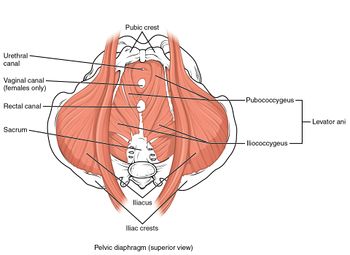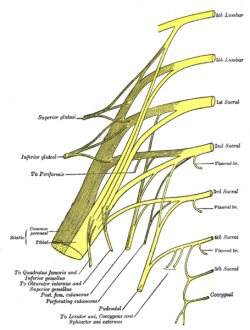The effect of Pilates on pelvic floor muscle strength in women with urinary incontinence: Difference between revisions
No edit summary |
No edit summary |
||
| Line 98: | Line 98: | ||
<div class="col-md-6"> {{#ev:youtube|cO4vb678un8|300}} <div class="text-right"><ref>PilatesAnytime. Pilates Hundred Explained and Demonstrated. Available from: https://www.youtube.com/watch?v=cO4vb678un8 [last accessed 2/14/2020]</ref></div></div> | <div class="col-md-6"> {{#ev:youtube|cO4vb678un8|300}} <div class="text-right"><ref>PilatesAnytime. Pilates Hundred Explained and Demonstrated. Available from: https://www.youtube.com/watch?v=cO4vb678un8 [last accessed 2/14/2020]</ref></div></div> | ||
==== Roll-up (supine) ==== | ==== Roll-up (supine) ==== | ||
<div class="row"> | |||
segmental flexion of Cx -, Tx and Lx spine | segmental flexion of Cx -, Tx and Lx spine | ||
==== Leg-circles (supine) ==== | ==== Leg-circles (supine) ==== | ||
<div class="row"> | |||
unilateral perpendicular leg circles clockwise and anti-clockwise while maintaining a stable pelvis<div class="row"><div class="row"> | unilateral perpendicular leg circles clockwise and anti-clockwise while maintaining a stable pelvis<div class="row"><div class="row"> | ||
<div class="row"><div class="row"> | <div class="row"><div class="row"> | ||
| Line 109: | Line 111: | ||
(modification: side-ly)<div class="row"><div class="row"><div class="row"> | (modification: side-ly)<div class="row"><div class="row"><div class="row"> | ||
<div class="row"><div class="row"><div class="row"><div class="row"><div class="row"> | |||
<div class="row"><div class="row"><div class="row"><div class="row"><div class="row"> | <div class="row"><div class="row"><div class="row"><div class="row"><div class="row"> | ||
<div class="row"><div class="row"><div class="row"><div class="row"> | <div class="row"><div class="row"><div class="row"><div class="row"> | ||
| Line 114: | Line 117: | ||
==== Adductor Squeeze (supine/ crook-ly) ==== | ==== Adductor Squeeze (supine/ crook-ly) ==== | ||
<div class="row"><div class="row"><div class="row"> | <div class="row"><div class="row"><div class="row"> | ||
<div class="row"><div class="row"><div class="row"><div class="row"><div class="row"> | |||
<div class="row"><div class="row"><div class="row"><div class="row"><div class="row"> | |||
<div class="row"><div class="row"><div class="row"><div class="row"> | |||
<div class="row"><div class="row"><div class="row"><div class="row"><div class="row"><div class="row"><div class="row"> | |||
<div class="row"><div class="row"><div class="row"><div class="row"><div class="row"> | <div class="row"><div class="row"><div class="row"><div class="row"><div class="row"> | ||
<div class="row"><div class="row"><div class="row"><div class="row"> | <div class="row"><div class="row"><div class="row"><div class="row"> | ||
| Line 163: | Line 170: | ||
== Conclusion == | == Conclusion == | ||
Each patient is different, therefore it is extremely important to individualize each session to the patient's specific needs and abilities. Pilates can be a great addition to standard Physiotherapy care by modifying exercises to ensure the correct technique and contraction of the PFM.<div class="row"><div class="row"><div class="row"> | |||
<div class="row"><div class="row"><div class="row"><div class="row"><div class="row"> | |||
<div class="row"><div class="row"><div class="row"><div class="row"><div class="row"> | |||
<div class="row"><div class="row"><div class="row"><div class="row"> | |||
<div class="row"><div class="row"><div class="row"><div class="row"><div class="row"><div class="row"><div class="row"> | |||
<div class="row"><div class="row"><div class="row"><div class="row"><div class="row"> | |||
<div class="row"><div class="row"><div class="row"><div class="row"> | |||
<div class="row"><div class="row"><div class="row"><div class="row"><div class="row"><div class="row"><div class="row"> | |||
<div class="row"><div class="row"><div class="row"><div class="row"> | |||
<div class="row"><div class="row"><div class="row"><div class="row"> | |||
<div class="row"><div class="row"> | |||
<div class="row"><div class="row"><div class="row"> | |||
<div class="row"><div class="row"><div class="row"><div class="row"><div class="row"> | |||
<div class="row"><div class="row"><div class="row"><div class="row"> | |||
<div class="row"><div class="row"><div class="row"><div class="row"><div class="row"><div class="row"><div class="row"> | |||
<div class="row"><div class="row"><div class="row"><div class="row"> | |||
<div class="row"><div class="row"><div class="row"><div class="row"> | |||
<div class="row"><div class="row"> | |||
<div class="row"><div class="row"> | |||
<div class="row"><div class="row"><div class="row"> | |||
<div class="row"><div class="row"><div class="row"><div class="row"><div class="row"> | |||
<div class="row"><div class="row"><div class="row"><div class="row"> | |||
<div class="row"><div class="row"><div class="row"><div class="row"><div class="row"><div class="row"><div class="row"> | |||
<div class="row"><div class="row"><div class="row"><div class="row"> | |||
<div class="row"><div class="row"><div class="row"><div class="row"> | |||
<div class="row"><div class="row"> | |||
<div class="row"><div class="row"> | |||
<div class="row"><div class="row"> | |||
<div class="row"><div class="row"> | |||
<div class="row"><div class="row"> | |||
<div class="row"><div class="row"> | |||
<div class="row"> | <div class="row"> | ||
Adding Pilates exercise to standard Physiotherapy care has been found to lower financial strain on the healthcare system, providing less discomfort (no internal devices) and can be used as an alternative for individuals disliking conventional PFM exercises<ref name=":1" /><div class="row"> | Adding Pilates exercise to standard Physiotherapy care has been found to lower financial strain on the healthcare system, providing less discomfort (no internal devices) and can be used as an alternative for individuals disliking conventional PFM exercises<ref name=":1" /><div class="row"> | ||
== References == | == References == | ||
<references /> | <references /> | ||
Revision as of 23:04, 15 February 2020
Introduction[edit | edit source]
The prevalence of Urinary Incontinence (UI) among women varies widely but is approximately 55%. Many women feel embarrassed and believe it's a normal part of womanhood. For this reason, many cases of UI go undiagnosed.
UI has a large impact on the socioeconomic burden worldwide. UI is associated with lower Quality of Life (QoL), depression and extremely high annual medical-care costs.
Risk factors include;
- pregnancy and childbirth
- hysterectomy
- Higher body-mass-index (BMI)
- advanced age
- family history
- smoking
- caffeine
- Diabetes
- constipation
- urinary tract infections (UTI)[1]
Clinically Relevant Anatomy and Physiology[edit | edit source]
The Pelvic Floor muscles' (PFM) main function is control over bladder, bowel, sexual function, pregnancy in women and providing support to pelvic organs[2].
The PFM mainly consists of the levator ani and coccygeus muscles[3] and are innervated from the lumbosacral plexus[2].
Mechanism of pelvic floor Injury[edit | edit source]
Literature indicates a strong association between vaginal childbirth and pelvic floor disorders however, further research is necessary to determine which aspects of childbirth contribute most[4].
Pregnancy and childbirth may lead to pelvic floor injury due to compression, stretching or tearing of nerve, muscle, and connective tissue.
The following pelvic floor-complications may occur due to pregnancy and childbirth;
- neural injury (due to compression during labour and vaginal delivery),
- levator ani and coccygeus muscles injury,
- fascial injury, and
- impaired connective tissue remodelling (increased synthesis of collagen and elastin causes an alteration in soft tissue biomechanics during pregnancy)[5].
General UI management plan[edit | edit source]
Lifestyle interventions
- reduce fluids, caffeine and carbonated drinks
- regular and timed urination
- treating constipation
- reduce BMI (<25)
- pelvic floor muscle training (PFMT)
Pharmacology (urgency urinary incontinence)
- anticholinergics
- Beta 3 agonist
Surgery (stress urinary incontinence)
- injectable bulking agents
- Burch colpo-suspension
- fascial slings
- mid-urethral synthetic slings
Other
- onabotullinumtoxinA injection
- sacral neuromodulation
- posterior tibial nerve stimulation
- incontinence pessaries[1]
Pelvic Floor Muscle Training and Pilates[edit | edit source]
It's important to understand that PFM function in synergy with abdominal muscles, chest wall and diaphragm, and not in isolation. Throughout each day, the intra-abdominal pressure and trunk muscle activity alternate regularly. The PFM have to respond rapidly to these changes to prevent incontinence or prolapse of pelvic organs.
The pilates concept is based on 'centre'(core) and 'control'. The pilates method focusses on the following muscles when referring to the 'core';
- PFM (inferiorly),
- diaphragm (superiorly),
- transverse abdominis (TrA) and oblique muscles (anteriorly)
- multifidus (posteriorly)[6]
Therefore, when rehabilitating the PFM, it is important to do so in conjunction with the other muscular groups named above.
Pilates exercise program vs.conventional PFM exercise program[edit | edit source]
A Pilates exercise - and standard PFM exercise program seems to be equally effective, in improving the recovery time of UI, as well as improve quality of life (QoL). However, higher rates of fully-recovered individuals, diagnosed with UI, are found among individuals following Pilates exercise programmes[6].
Current best available evidence states that individuals, diagnosed with UI, can benefit by doing as little as one session per week, for 8 to 52 weeks[6].
Clinicians often apply activity restrictions among women suffering from pelvic floor disorders. This is due to the association of increased intra-abdominal pressure (IAP) with pelvic floor loading. Fortunately, a study completed by Coleman et al. (2015), determined no statistically significant difference between the IAP in sit-to-stand and fundamental Pilates exercises and therefore recommends Pilates exercises to women desiring a low intra-abdominal pressure exercise routine[7].
Modified Pilates (MP) as an addition to standard physiotherapy care seems to be even more beneficial[8].
Examples of Pilates exercises[edit | edit source]
Activation (supine/ crook-ly)[edit | edit source]
Pelvic Clock (supine/ crook-ly)[edit | edit source]
moving pelvis like a clock to facilitate spinal flexion, extension, lateral flexion and rotation
Bridging (supine/ crook-ly)[edit | edit source]
posterior pelvic tilt pelvis, then elevate the pelvis
Chest-lift (supine/ crook-ly)[edit | edit source]
hands interlaced behind the head, followed by segmental flexion with cervical and thoracic spine
Hundred (supine)[edit | edit source]
legs at table-top, Cx and Tx spine in flexion with bilateral arms pumping up and down by the sides of the trunk
Roll-up (supine)[edit | edit source]
segmental flexion of Cx -, Tx and Lx spine
Leg-circles (supine)[edit | edit source]
Side-kick kneeling[edit | edit source]
elevate the superior leg to hip height and pulse anteriorly and then posteriorly
(modification: side-ly)Adductor Squeeze (supine/ crook-ly)[edit | edit source]
contract muscles by squeezing a ball between knees
Bent Knee fall out (supine/ crook-ly)[edit | edit source]
unilateral abduction with pelvic stabilization
Supine Arm series (supine/ crook-ly)[edit | edit source]
arm work in flexion, abduction and rotation with trunk stabilization
4 point kneeling position[edit | edit source]
elevate one limb with trunk stabilization or maintaining a neutral spine
[15]Roll down series (seated)[edit | edit source]
segmented spinal flexion and back up maintaining PFM activation
[16]Assisted Squat[edit | edit source]
squat with trunk stabilization and co-contraction of core [6][7]

